Geological Time Scale
The geological time scale is a system of chronological dating that relates geological strata to time. It is used by geologists, paleontologists, and other Earth scientists to describe the timing and relationships between events that have occurred during the Earth's history. The time scale is divided into eons, eras, periods, epochs, and ages, and it provides a framework for understanding the history and evolution of the Earth.
Key Concepts
- Eons: The largest division of time on the geological time scale, representing billions of years. The current eon is the Phanerozoic eon, which began around 541 million years ago.
- Eras: Eons are subdivided into eras, which are characterized by significant geological and biological events. The Phanerozoic eon is divided into three eras: the Paleozoic, Mesozoic, and Cenozoic eras.
- Periods: Eras are further divided into periods, each associated with distinct rock layers and fossil assemblages. For example, the Mesozoic era is divided into the Triassic, Jurassic, and Cretaceous periods.
- Epochs: Periods are divided into epochs, which are defined by specific changes in the Earth's environment and biota.
- Ages: The smallest units of geological time, ages are defined by specific rock layers and the fossils found within them.
Study Guide
When studying the geological time scale, it is important to understand the major eons, eras, and periods, as well as the key events and life forms associated with each. Additionally, familiarizing yourself with the concept of relative and absolute dating methods will help you understand how scientists determine the ages of rocks and fossils.
Key topics to cover include:
- The three major eras of the Phanerozoic eon and their defining characteristics
- The major extinction events and their impact on Earth's biodiversity
- The development of life forms throughout the geological time scale, including the rise of complex organisms such as dinosaurs and mammals
- The methods used to determine the ages of rocks and fossils, including stratigraphy, radiometric dating, and index fossils
By mastering these concepts, you will gain a comprehensive understanding of the geological time scale and the history of our planet.
[Geological Time Scale] Related Worksheets and Study Guides:
.◂Science Worksheets and Study Guides Seventh Grade. Protists and Fungi

 Worksheet/Answer key
Worksheet/Answer key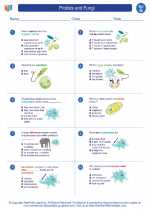
 Worksheet/Answer key
Worksheet/Answer key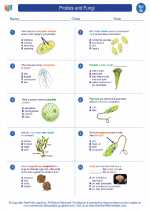
 Worksheet/Answer key
Worksheet/Answer key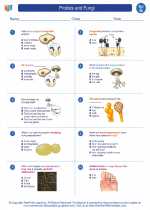
 Worksheet/Answer key
Worksheet/Answer key
 Vocabulary/Answer key
Vocabulary/Answer key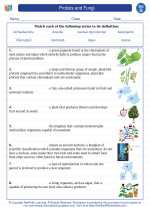
 Vocabulary/Answer key
Vocabulary/Answer key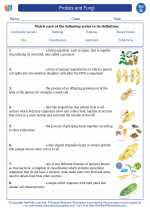
 Vocabulary/Answer key
Vocabulary/Answer key
 Vocabulary/Answer key
Vocabulary/Answer key
 Vocabulary/Answer key
Vocabulary/Answer key
 Vocabulary/Answer key
Vocabulary/Answer key
